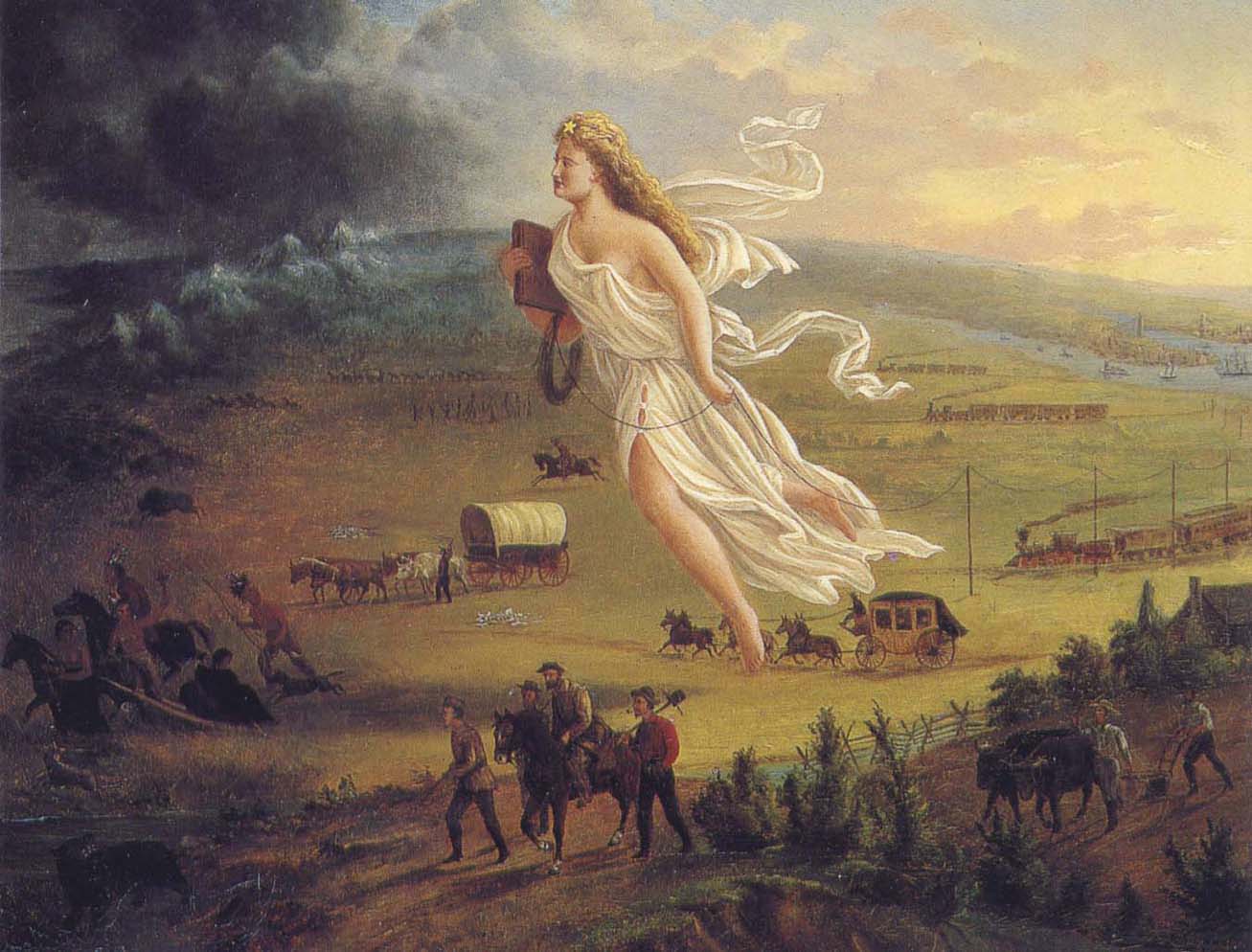This journal entry for my Dimensions of Culture: Imagination class is in response to the following prompt:
Using an example from your notes or readings, explain the idea of ‘contradiction’ or ‘ideology’ in the image American Progress (1873) [seen above]
If you were redirected from The Devil Plays Games, you may read more about Columbia on Wikipedia.
The painting, American Progress, could be considered a contextually-appropriate embodiment of Manifest Destiny. Being a dominant ideology at the time, Manifest Destiny was a widely-prevalent system of beliefs that purported American settlers to be the destined occupants of the entire continent. This ideology was used to justify the settlers’ expansion to the West.
For instance, Andrew Jackson said the following to morally justify the battle of Horse Shoe Bend: “How lamentable it is that the path to peace should lead through blood, and over the carcass of the slain!! But it is in the dispensation of that providence, which inflicts partial evil to produce general good.” 1Takaki, Ronald. “Toward ‘The Stony Mountains’” A Different Mirror. 80-81. Print. This massacre of the Creeks was supposedly carried out in retaliation for the abuse of a white woman held captive by the Indians. However, this makes one but wonder about the circumstances that provoked her capture – was it not the ‘invaders’ who beleaguered the Natives of the land and took from them what was theirs in the first place?
One of the principles underlying the concept of Manifest Destiny is theological – one of divine expectation. Puritan settlers in the 17th century claimed that the Earth was the Lord’s garden, which he had bestowed upon men to replenish. John Winthrop said: “Why then should we stand starving here for the places of habitation… and in the meantime suffer a whole Continent as fruitful and convenient for the use of man to lie waste without any improvement.” 2Takaki, Ronald. “The ‘Tempest’ In The Wilderness” A Different Mirror. 26. Print.
Over 200 years later, the Manifest Destiny could be said to largely derive from this Puritan desire to make ‘use’ of this ‘vacant’ land. This could in fact be seen in American Progress, with the woman bringing ‘light’ in from the East as she lay telegraph wire on her journey Westward… and as the Natives fled. It was a depiction of America’s triumph of “civilization” over “savagery”. At the heart of this ideology lies a contradiction:
The Americans of the time viewed the Native inhabitants of the land as ‘savages’, and themselves as ‘civilized’ primarily based on conflicting objectives for the land. This attitude of superiority recurred throughout history, for example, when the British interacted with the Irish, and then the Americans with the Indian and Mexican people. However, one can then ask whether these definitions constructed by the Americans were valid to the Indians. Surely the American God was not theirs, and yet they’ve subsisted for thousands of years prior to the settlers’ arrival! They’ve most certainly done this without living the ways of the American people – not with their technology and non-communal land system. Why is it then that the Americans’ barbarous acts did not bring them, the Eurocentrically defined ‘civilized’, down to the same level as these ‘savages’ – both in the era’s dominant ideology, and even the Master Narrative?
Works Cited
- Takaki, Ronald. “Toward ‘The Stony Mountains’” A Different Mirror. 80-81. Print.
- Takaki, Ronald. “The ‘Tempest’ In The Wilderness” A Different Mirror. 26. Print.
Kudos to you if you found the F O O T.

